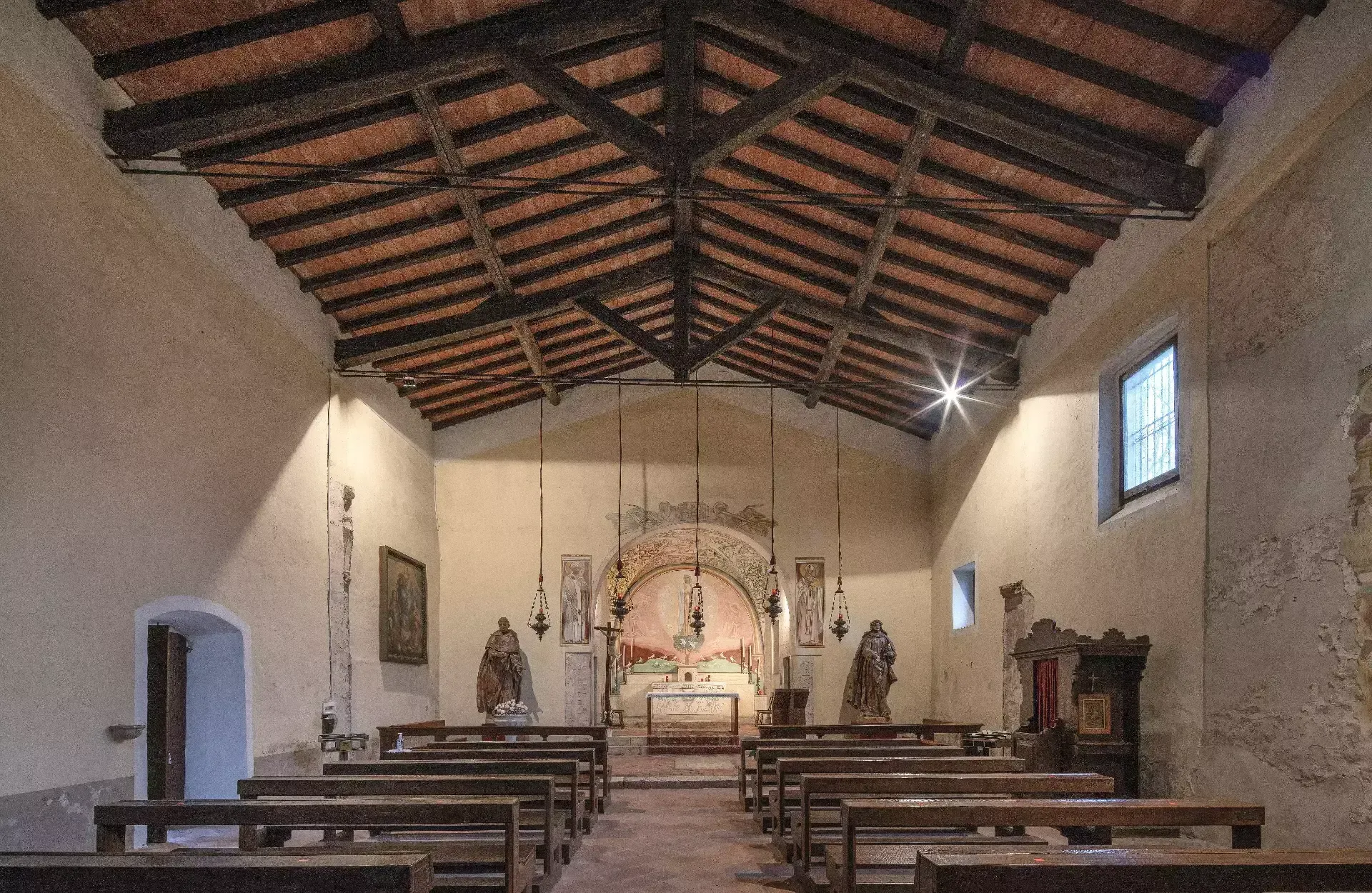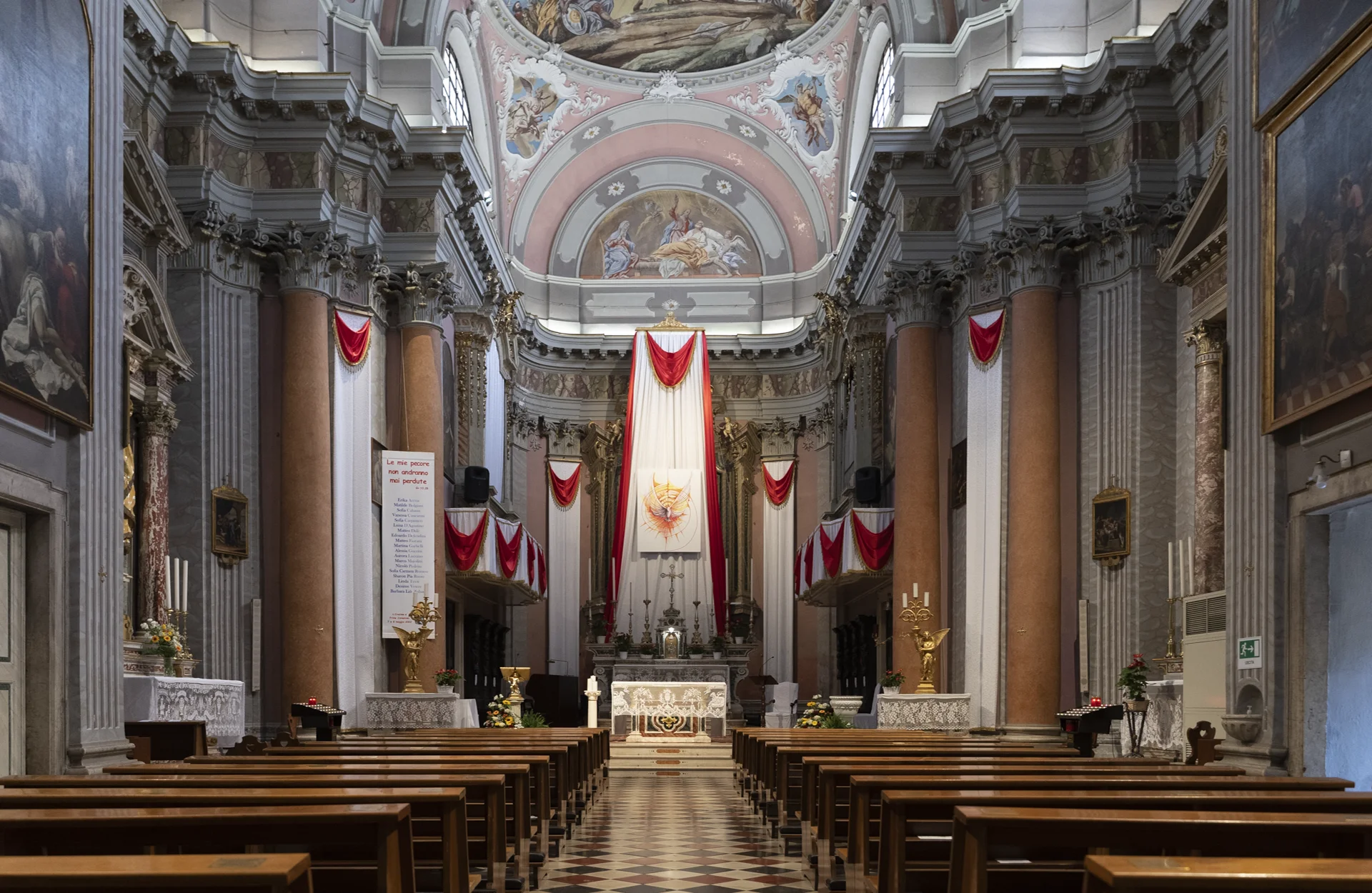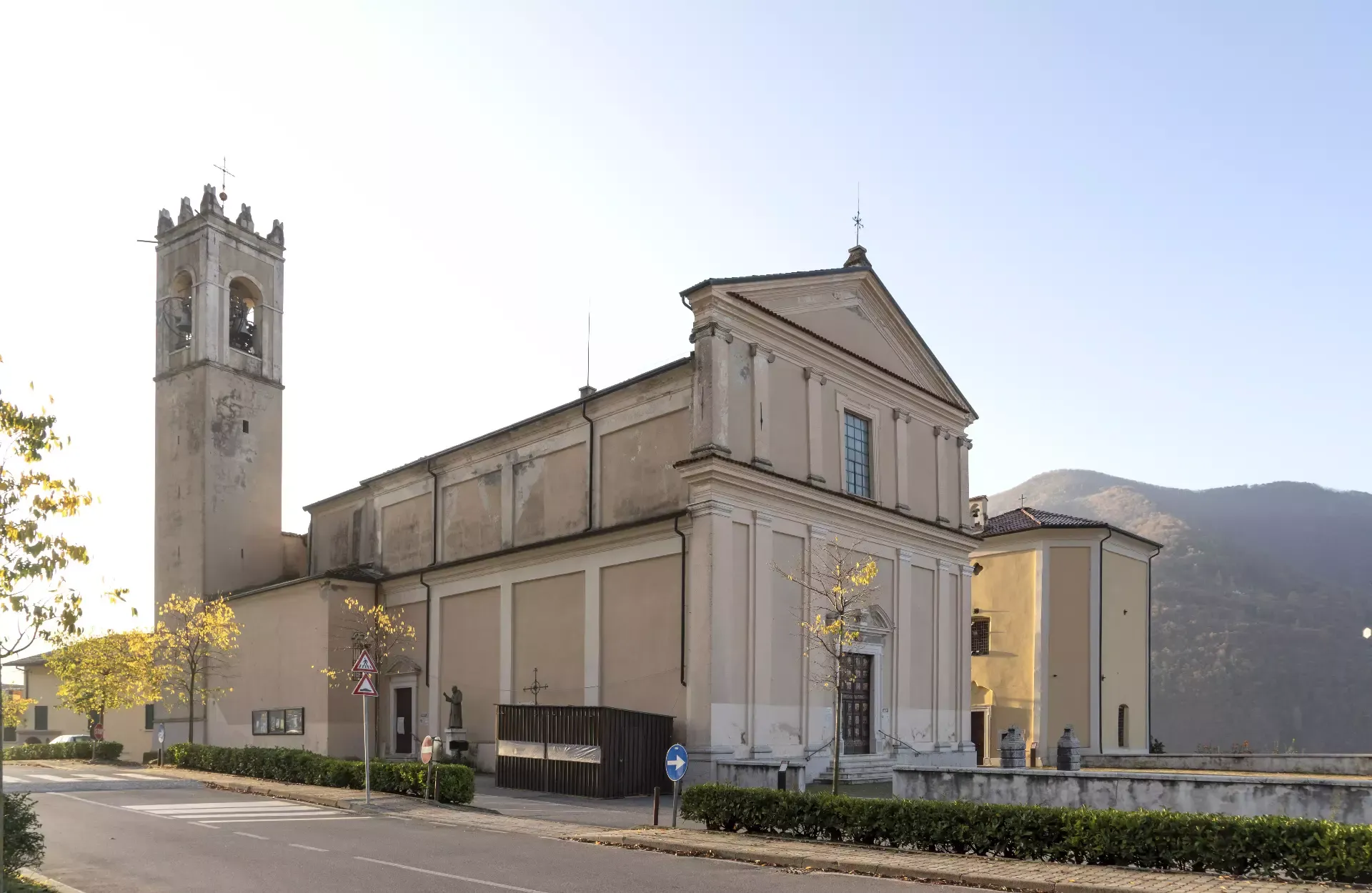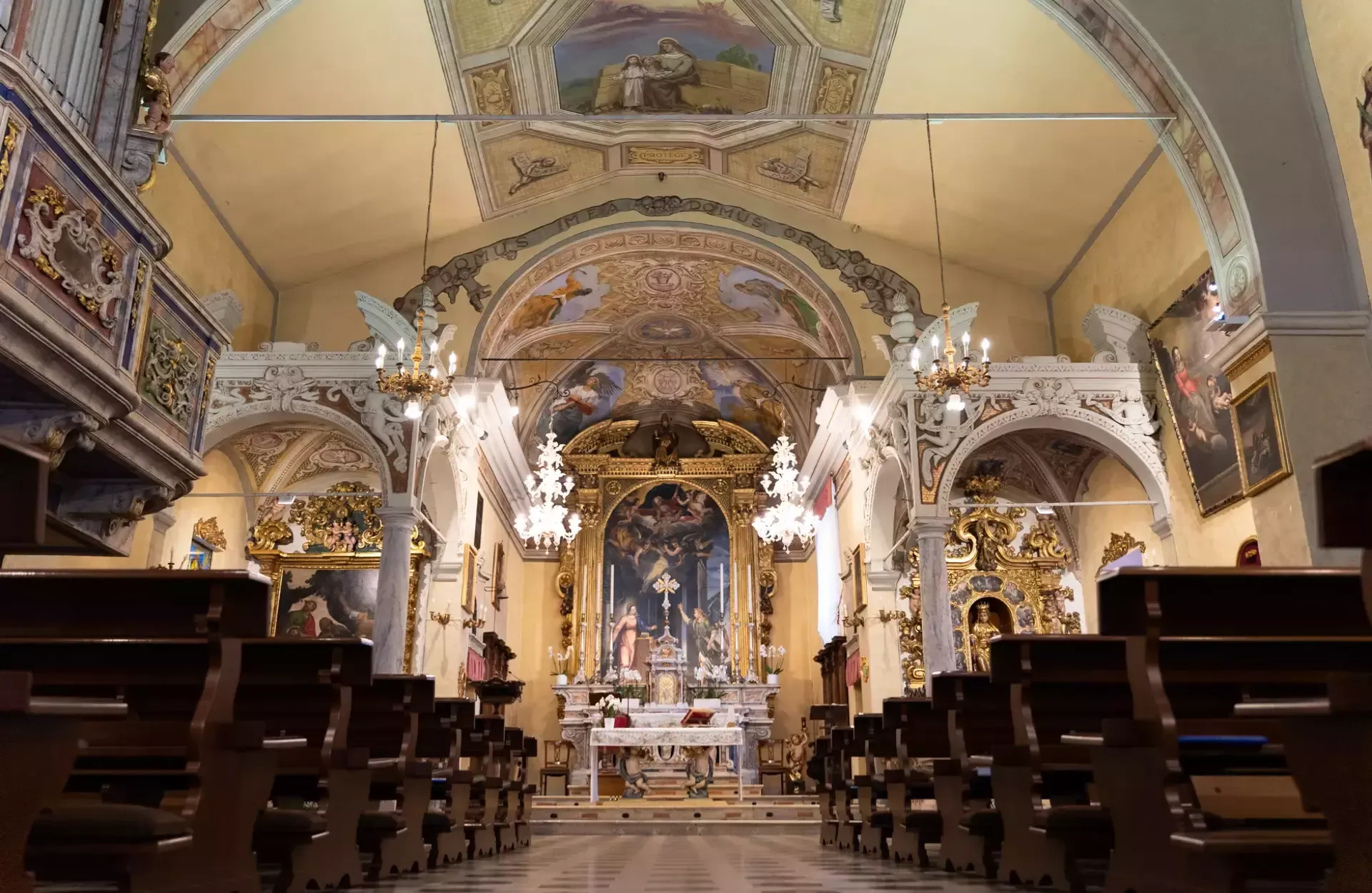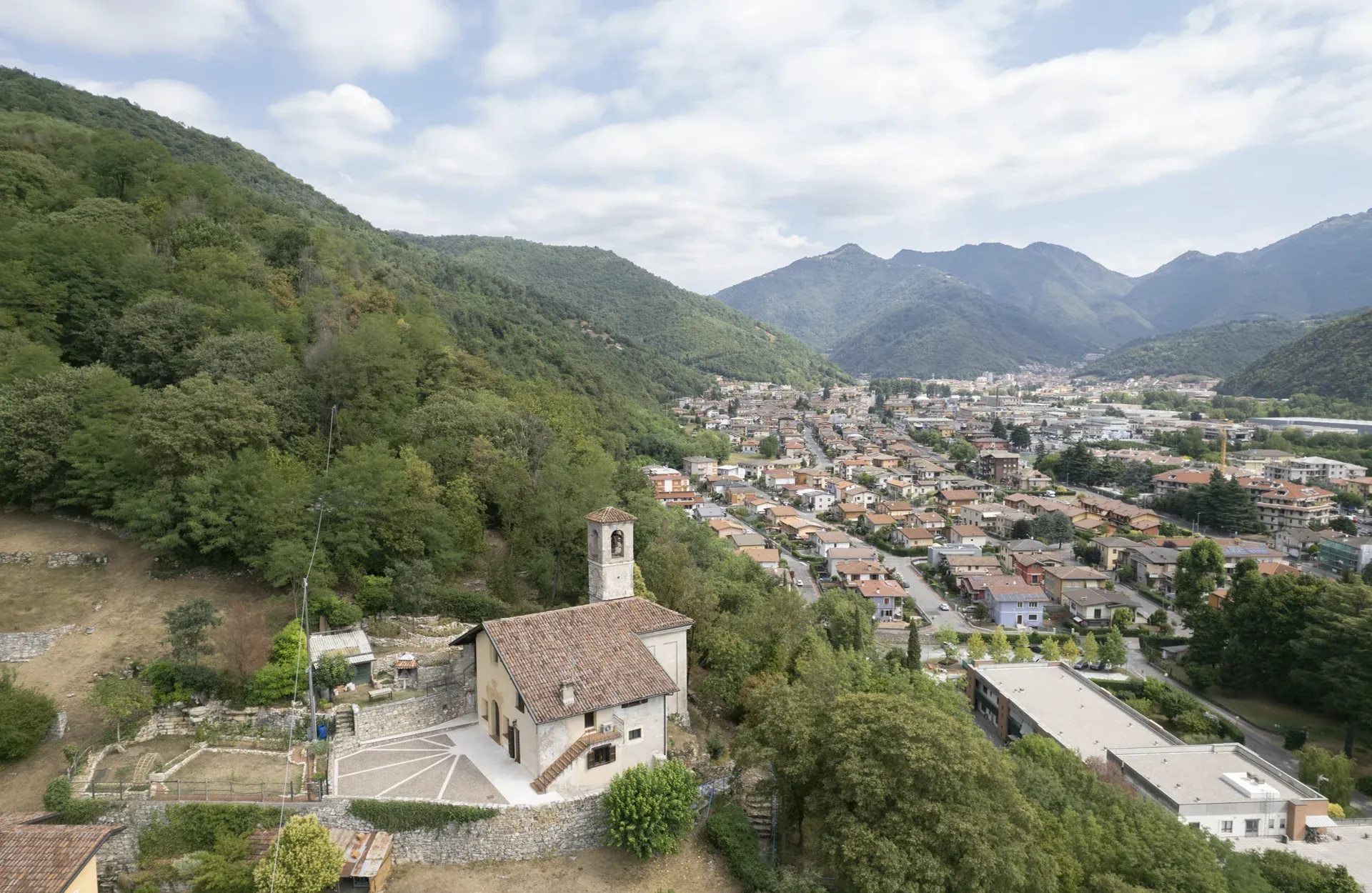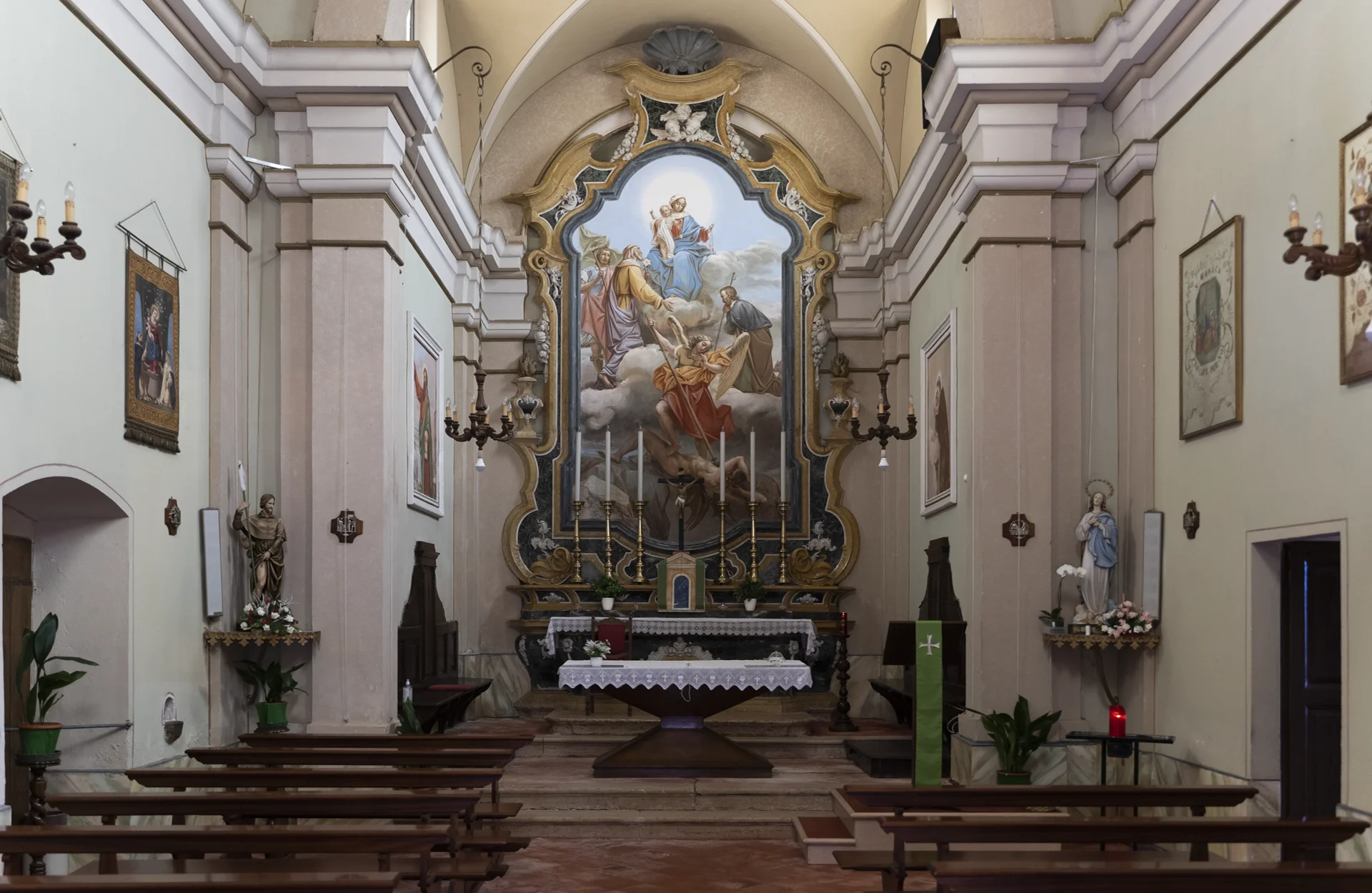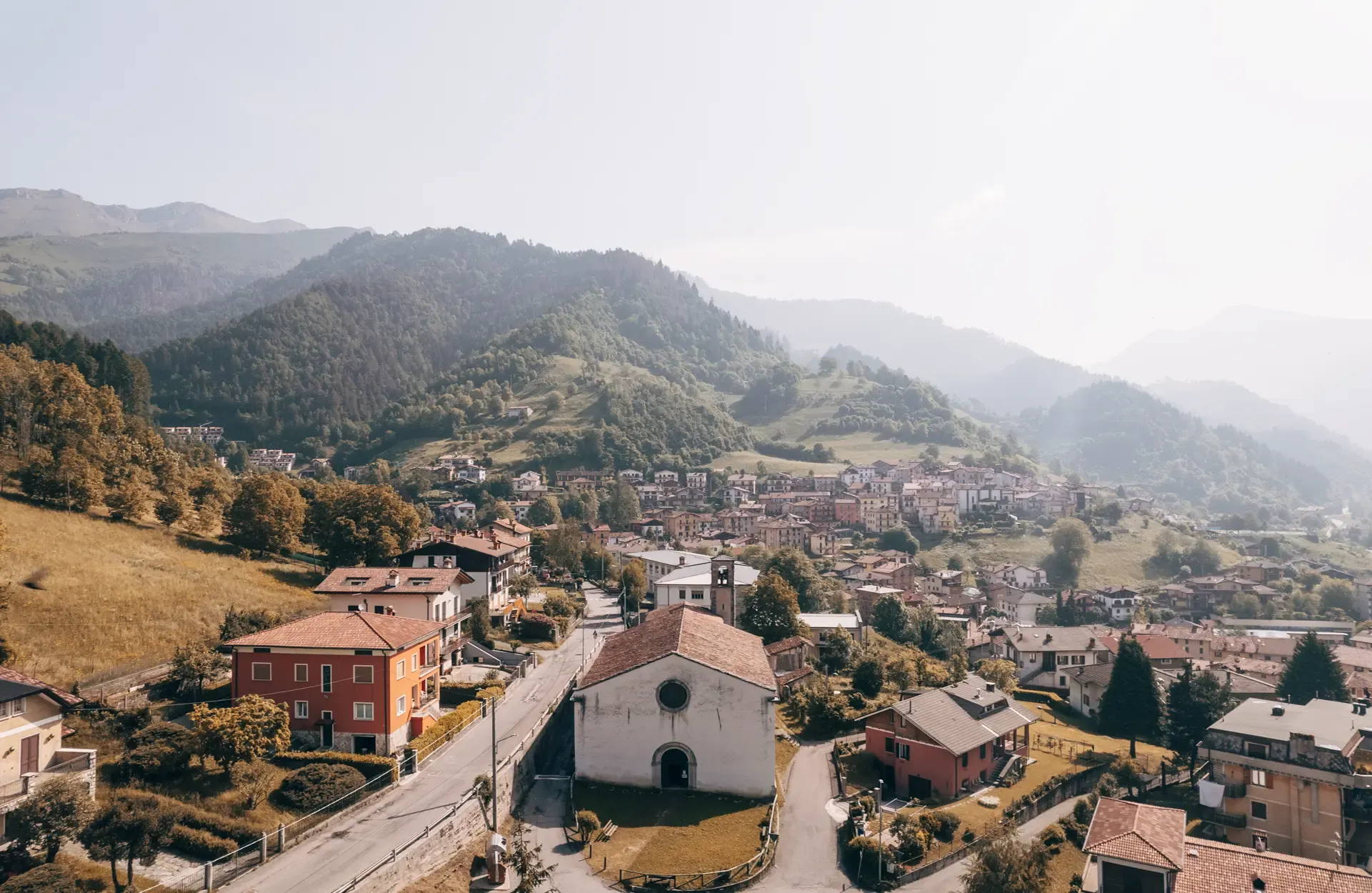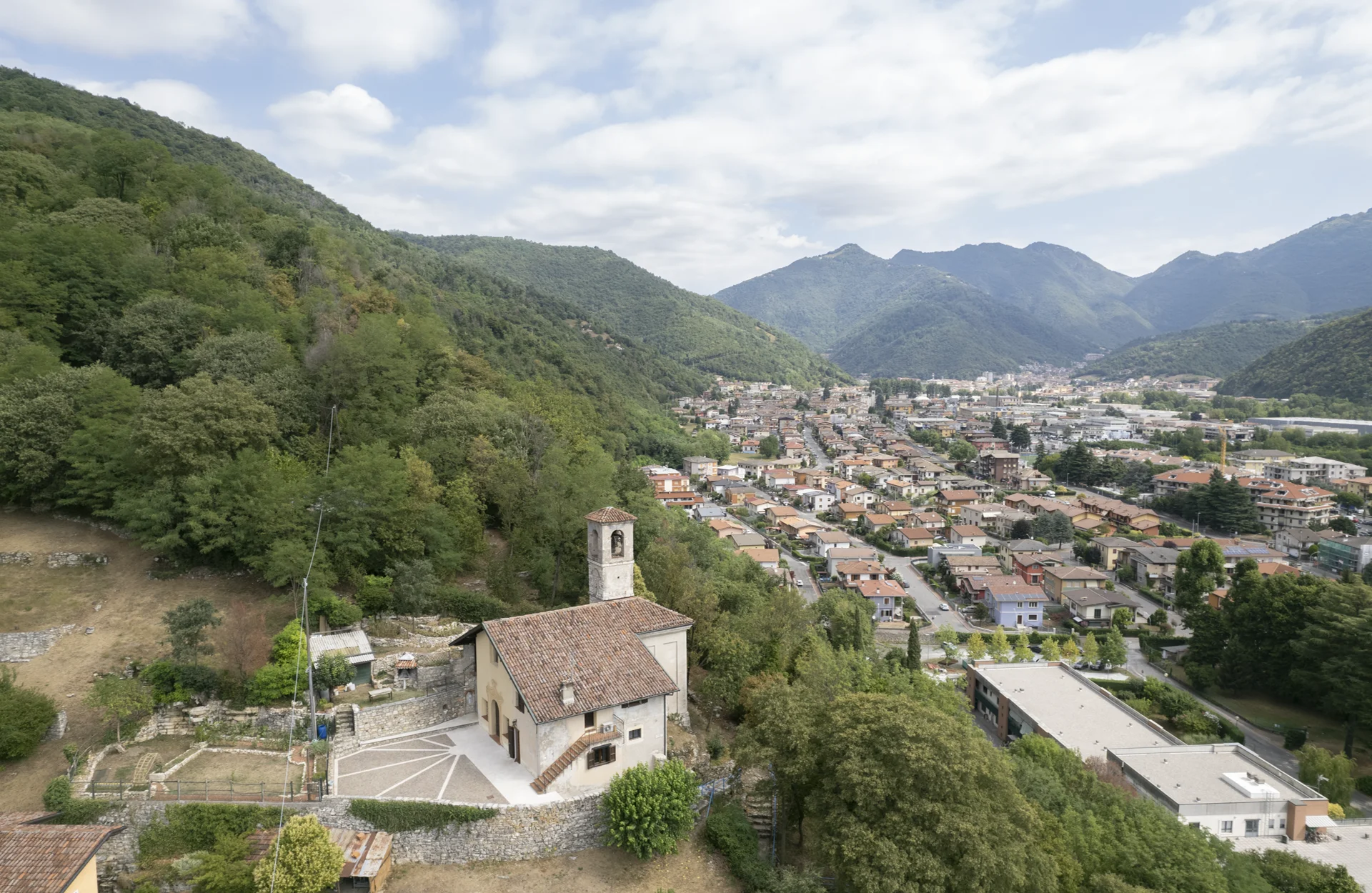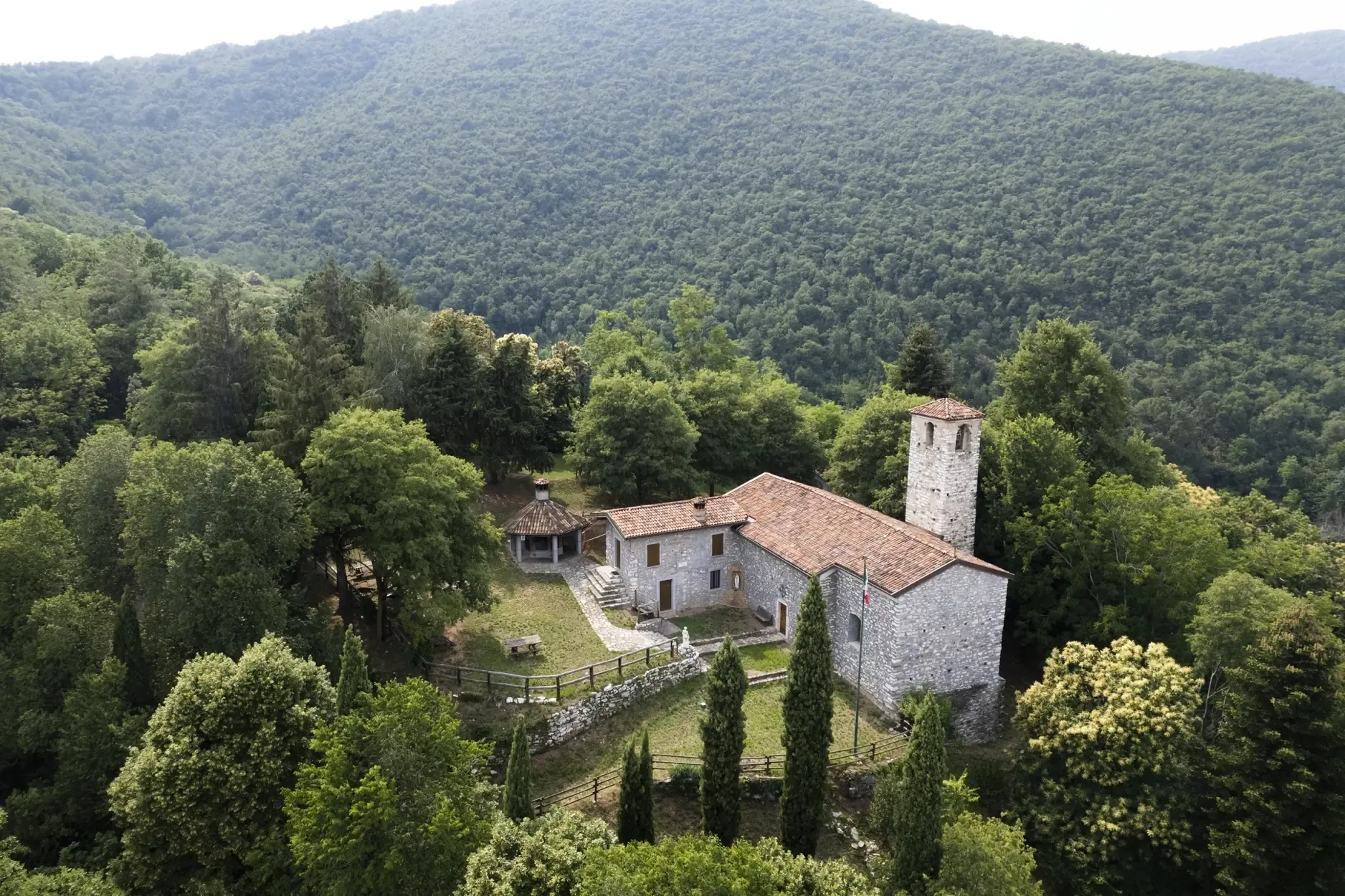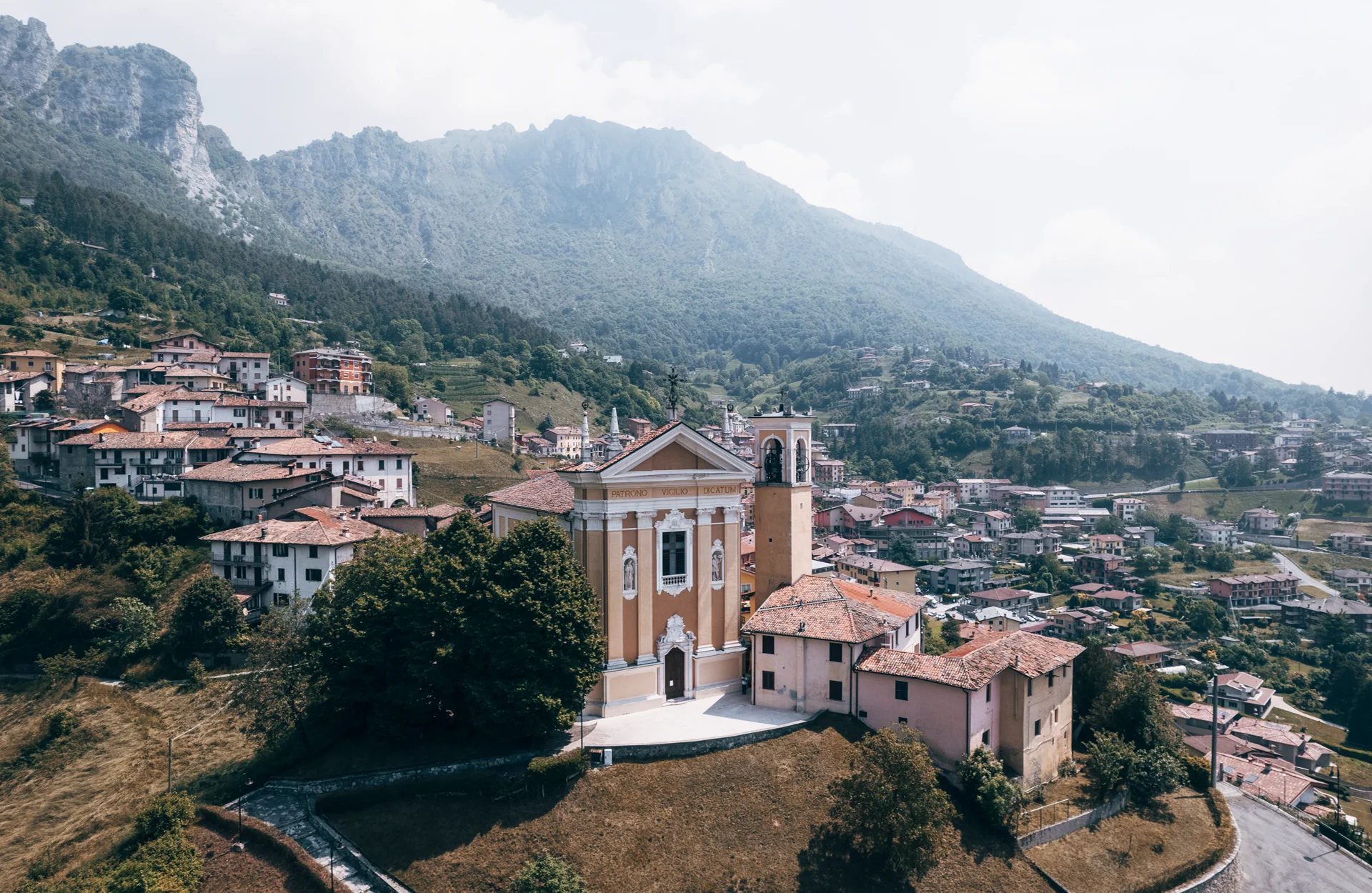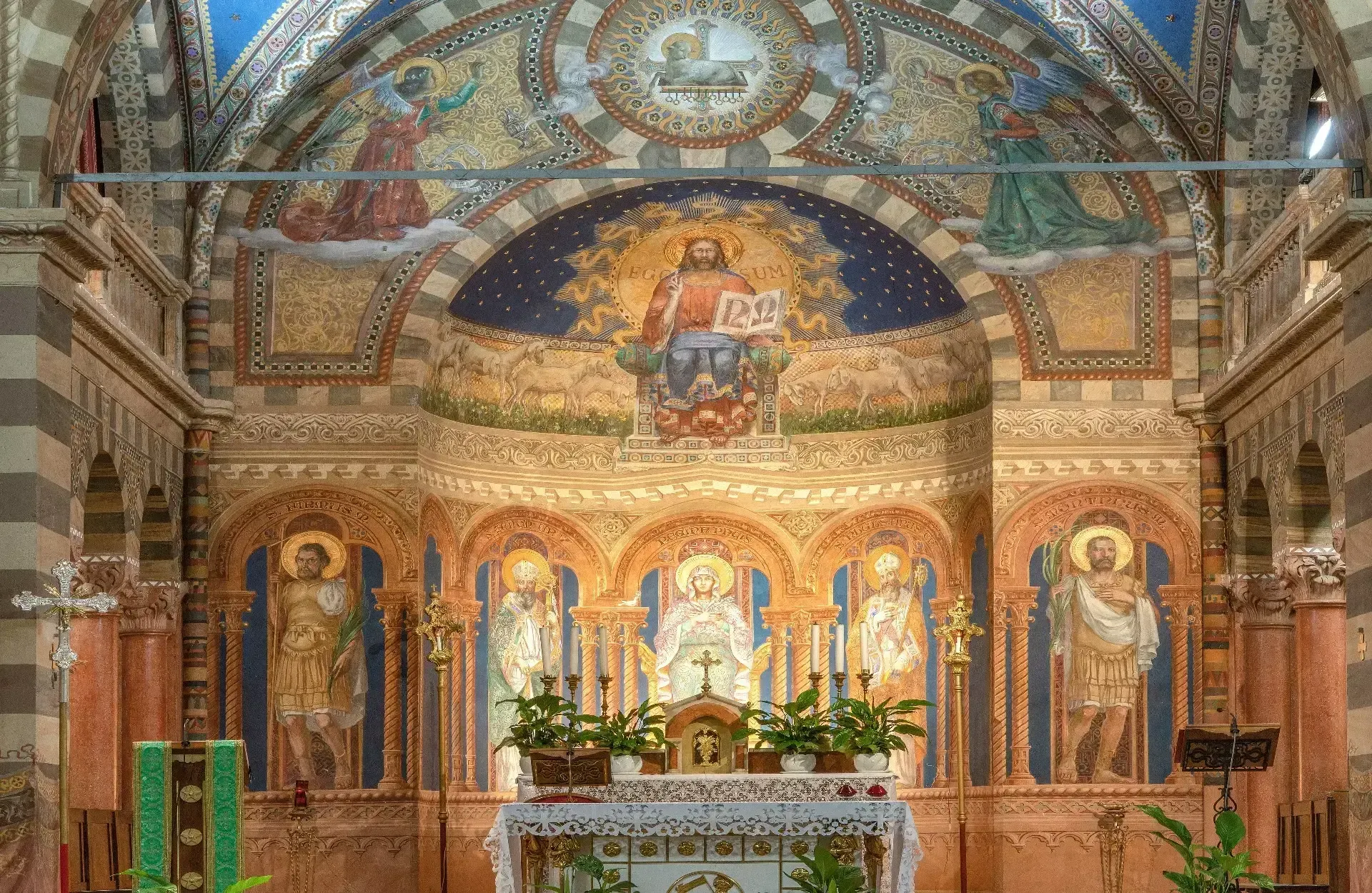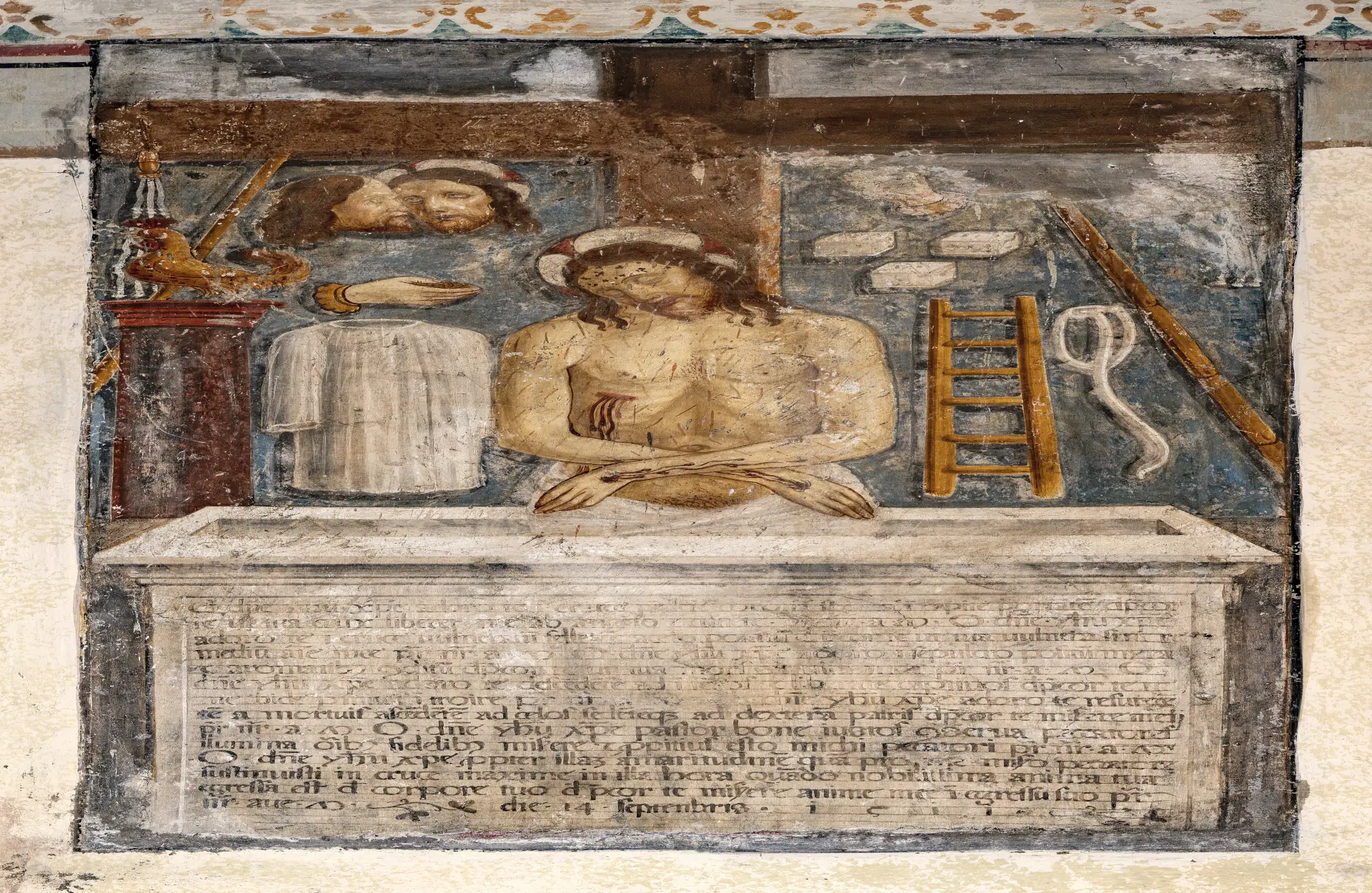For lovers of local history and culture, Valle Trompia offers a journey full of discoveries, starting with the traditional Iron and Mine Route, passing through the archaeological museums, the historic villas and palazzos, as well as the Paul VI collection of contemporary art and the Sacred Route, without forgetting the farming and peasant tradition. A territory with a thousand faces, all to be discovered and explored.
The Church of San Cesario rises at the edge of the district of the same name. The complex is dominated by the 1669 bell tower with two 1672 bells that bear the ancient version of the municipal coat of arms. The medieval church was built on the remains of a Roman building, and numerous Lombard relics have been reused in ...
The parish church of Carcina is dedicated to San Giacomo and work on its construction began in 1739 and was completed in 1782. Its interior preserves paintings by Stefano Viviani, Francesco Giugno, Pietro Scalvini and Antonio Paglia. The left side of the presbytery leads to the Regis Chapel created in 1851, with an altarpiece by the Brescian painter Luigi Campini. ...
In the area occupied by the Church of San Giovanni Battista, some stone findings foreign to Valle Trompia have led to the hypothesis that it was built on a Roman aedicule, on which another building of worship was erected in the 14th century, as evidenced by some remains found to the south. Today, the parish church appears as it did ...
The parish church of Polaveno is dedicated to San Nicola Vescovo. It dates back to the 15th century, but after repeated modifications, it features 17th-century Baroque altars, although the original ribbing of the vault survives. Along the wall to the right of the single nave, you can admire several 15th and 16th century frescoes depicting the Madonna. On the exterior, ...
The Church of San Rocco in Carcina, like the structure of the same name in the hamlet of Villa, was built in response to the population's request for protection against the plague, which also killed hammer and forge workers. Built in the 15th century, it houses a beautiful altarpiece by Pietro Scalvini dated 1785, dedicated to Saints Rocco, Pietro Martire, ...
Nella frazione Cimmo di Tavernole è possibile visitare la chiesa di San Rocco, probabilmente eretta a metà del XIX secolo come ringraziamento da parte dei fedeli per aver superato la prova del colera.
Upstream of the ancient centre of Collio rises the stately Church of San Rocco, along the road leading to the alpine hamlet of Memmo. Visitors first glimpse the large volume of the semi-circular main apse dating back to the end of the 15th century. This is the most interesting portion of the outside of the church as it still preserves, ...
Built as a request for protection against the plague, which also killed workers in foundries and forges, the church was already present in 1512. It was later embellished in 1580, used as an isolation hospital and enlarged again in the 18th century. An interesting fact: the altarpiece inside the church was painted by Eleonora Monti in 1769.
The church of San Velgio is located on a hill overlooking the village of San Vigilio and lies along the route of the ancient Via Valeriana, which leads towards the middle and upper Valle Trompia. The church probably stands on the site of an ancient pagan place of worship attached to a burial ground. It was enlarged between the 15th ...
The Parish Church of San Vigilio (martyr bishop of Trento) dates back to the 18th century and was built on the remains of a pre-existing church that had been built to replace a medieval chapel. The structure is situated in a dominant position on a hillock on the northern side of the valley; due to the size of the structure ...
The small church, dedicated to San Zenone and built in the 14th century, stands on a rise in the centre of the town; the building underwent an initial renovation in 1603 and was then rebuilt based on a design by the engineer Luigi Trombetta in 1915-1916, the years in which it was also consecrated. Inside there is a painting depicting ...
Among the houses of Graticelle is a small and beautiful church dedicated to the patron saint Sant'Antonio Abate. The current building, resulting from multiple extensions and renovations, has its original nucleus in a 15th-century oratory. This can be seen, after passing through the 18th-century entrance door, in the squat medieval column supporting the corner of the bell tower recessed into ...

